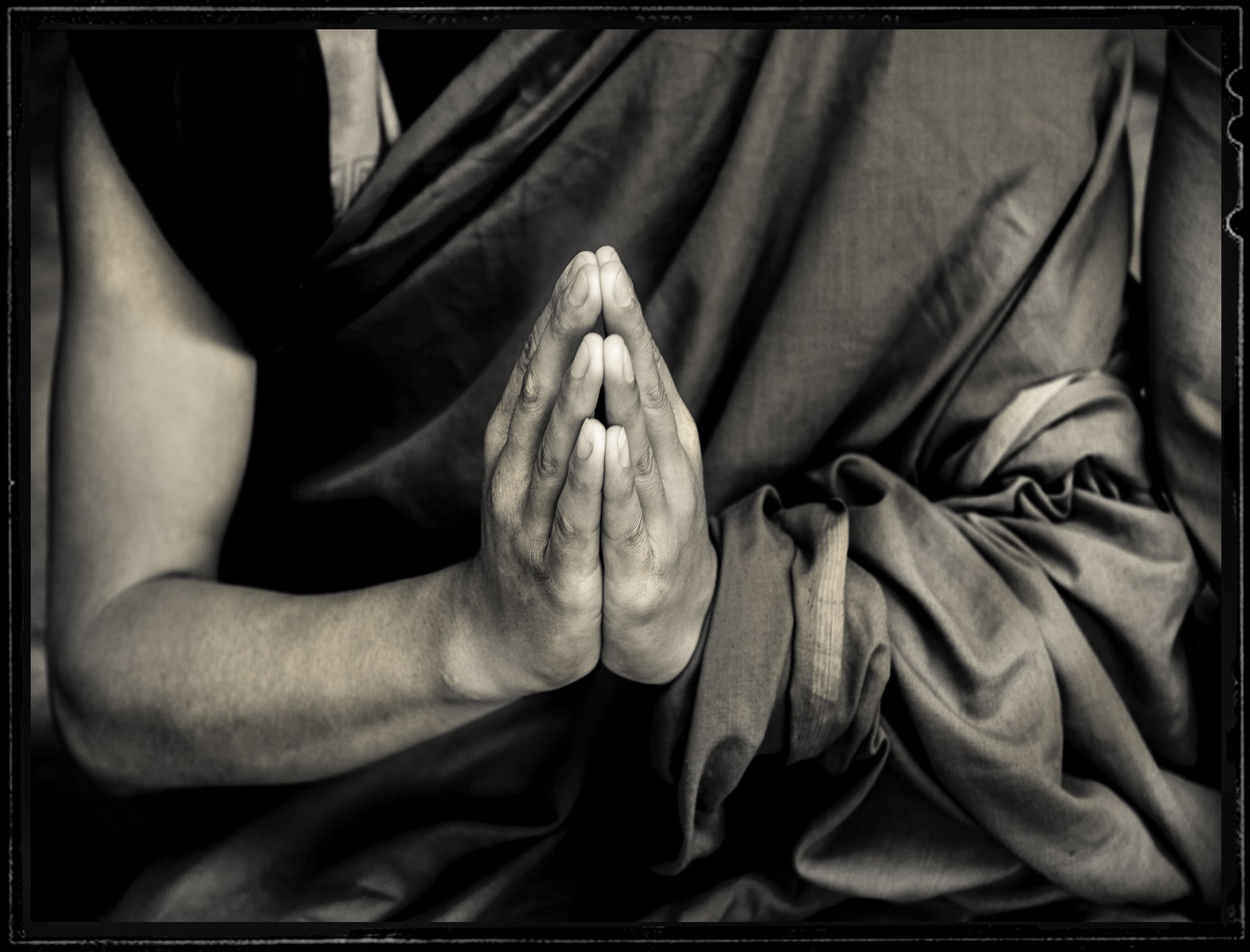Click here to view this artwork, Prayer | Bhutan, and its currently available sizes.
Prayer | BhutanAsk anyone with two hands—or a person with the use of only one—which hand is more powerful, they will have a sure, swift answer. Left or right, they say, because actual ambidexterity is extremely rare. People around the world recognize and self-identify a dominant hand. If allowed a follow up question about the particular uniqueness of each hand, a person will speak about each hand’s special, treasured characteristics and things made, touched, supported, or experienced by their individual hands. Unfortunately, also rare are people who, presented with a second person whose values, morals, culture, faith, habits, behavior or other traits are opposite or widely different, will describe that individual with similar affection, understanding, knowledge, forgiveness, or honorability. Consider now, this image of a monk in Bhutan, whose hands join in a universally recognized position of prayer. I posit that it is when two hands come together in an expression of faith or, as is the custom in Bhutan, in greeting, they are most powerful. The hands positioned thus convey softness, vulnerability, mortality, belief in something outside of oneself, but also speak to humanity and strength through unity. Concern and devotion to things and people beyond self do not mean forfeiting self-care. To practice self-care regularly is to deliberately cease doing, achieving, providing, striving. Instead, take a walk, get a massage, or simply reserve a quiet moment to breathe, reflect, rest, pray. As a humanitarian photographer, public speaker, mother, partner, friend, and in other roles, I know self-care is essential. If my care cup is full, even overflowing, I can give to others without limit from life’s bounty. Together, we can celebrate the power of two hands, two people, joined and unified. Limited Edition AVAILABLE SIZES: 24 x 32 inches (60.96 x 81.28 cm) 30 x 40 inches (76.2 x 101.6 cm) 40 x 53 inches (101.6 x 134.62 cm) |
Download Your Complimentary Fine Art Catalog



